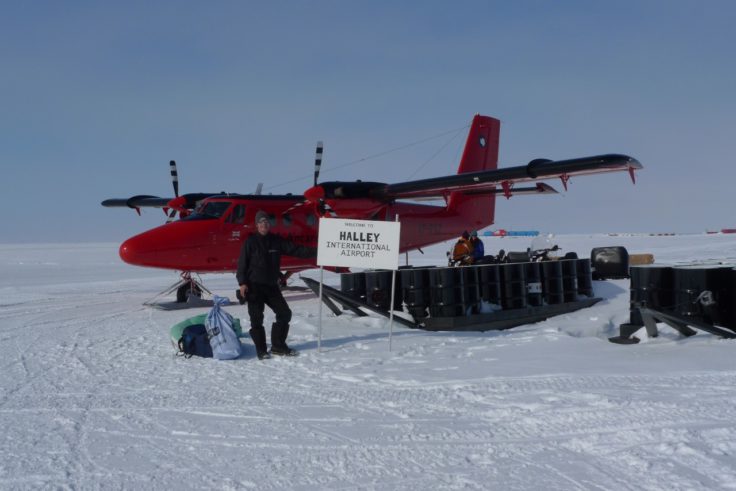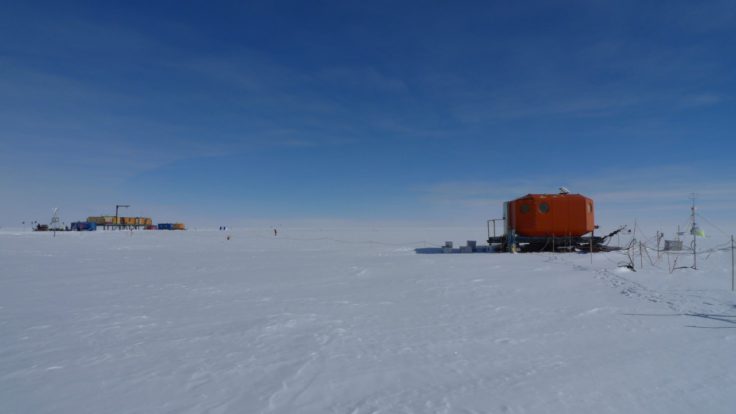ANTARCTIC BLOG: Arriving at the Polar plateau
23 January, 2017
A new blog post from atmospheric and glaciochemist Markus Frey who’s just arrived on the Polar plateau as part of the ISOL-ice research project. Read the team’s earlier post here.
Halley Station 75°35′ S, 26°25′ W, 35 m amsl
20 December 2016
In the early hours of the morning, we woke up to a magnificent sight of the Brunt Ice Shelf. The RRS Ernest Shackleton moored up alongside the sea ice. A couple of Adelie Penguins waddled up to greet us. Ship relief was under way immediately. Our science cargo came off first as priority and we were driven up to Halley research Station in a Sno-cat. At Halley, Becky and Holly checked and ordered the science cargo at the skiway for the flights to Kohnen Station and then waited for a suitable weather window for Markus to fly across from Rothera. It took another 10 days until he finally arrived … Antarctic weather conditions are very unpredictable indeed!

Kohnen Station 75ºS 0ºW, 2890 m amsl – air temperature -28ºC, wind speed 3knts, clear skies
10 January 2017
The German Kohnen Station sits high on the East Antarctic Plateau about 550 km inland from the Antarctic coast. The station was established by the Alfred Wegener Institute (AWI) in 2001 to drill one of the two EPICA (European Ice Core Drilling in Antarctica) ice cores reaching in 2006 a final depth of more than 2700 m. Kohnen is only operated in summer, which allows ice core, climatology, glaciology and atmospheric chemistry studies to be carried out in the remote parts of Dronning Maud Land.

It took four BAS Twin Otter aircraft flights to get the field party (Becky, Markus and Holly) and our 2.5 tons of science cargo to Kohnen Station. The flight from Halley to Kohnen station took 3 hours. We flew over the new Halley 6a station site and the Heimefrontfjellea mountain range. Once arrived, it took a couple of days to acclimatise to the high elevation. We have been treated with outstanding German hospitality and cuisine, including Berliner (jam filled buns), Bretzel, Strudel, an amazing selection of sweet treats (Hanuta, Ritter Sport, Haribo) and soups (Maultaschen, Eierfetzen), smoked salmon from Bremerhaven … Guten Appetit!
We have set up a suite of atmospheric instruments at the “flux site” in the clean air sector which is approx. 350 m from the main station. The atmospheric instruments are monitoring nitrogen oxides, ozone, turbulent flux and down welling irradiance and will run for the whole duration of the campaign. We have also been taking daily aerosol and surface snow samples.